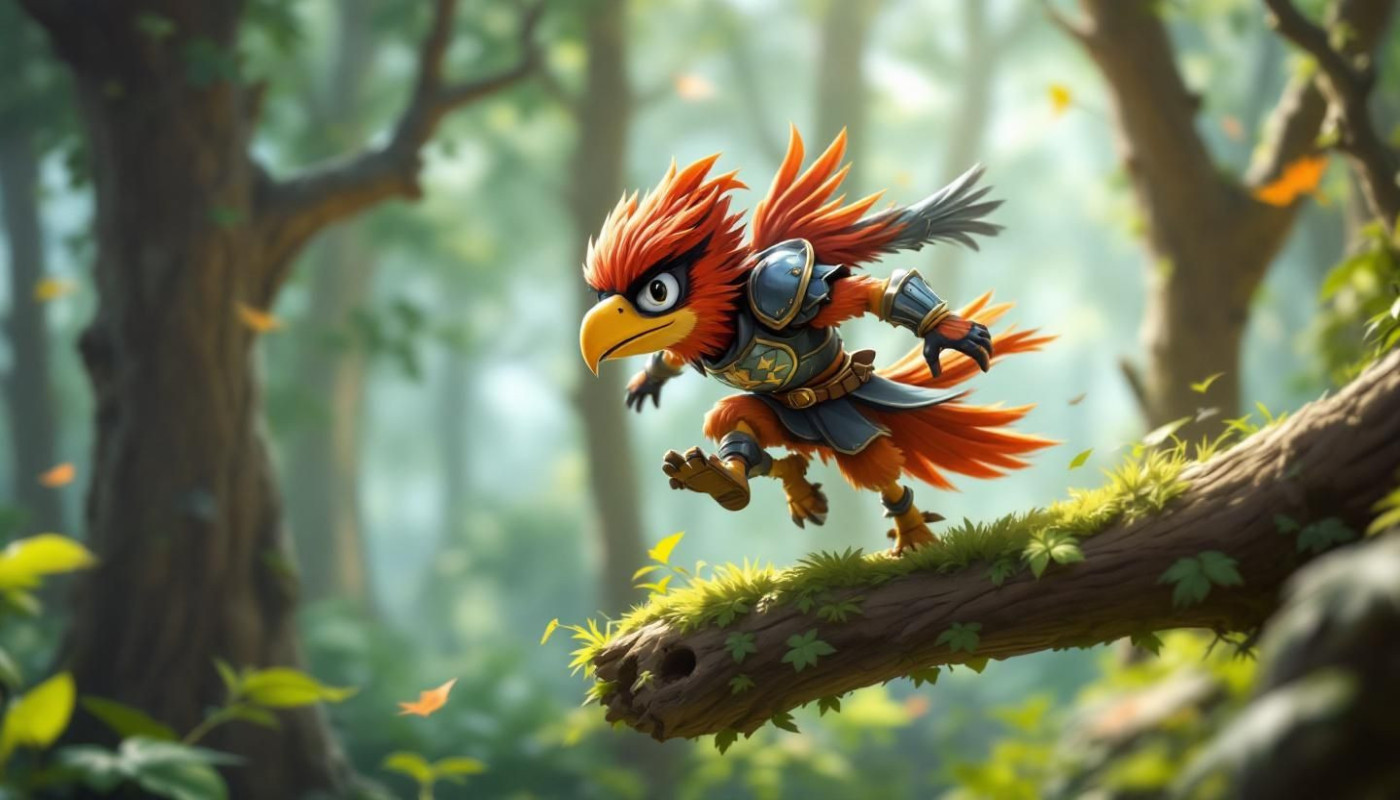Table of contents
Delving into the intricate relationship between game design and user engagement unveils a fascinating intersection of creativity and psychology. This exploration not only highlights the importance of carefully crafted gameplay but also emphasizes the powerful impact that design choices have on a player's experience. Join us as we unravel the critical elements that keep players absorbed and how masterful game design can transform casual interest into unwavering devotion.
Understanding the Psychology of Engagement
At the heart of user engagement in the realm of gaming lies a complex interplay of psychological principles that captivate and maintain players' interest. One fundamental concept is the flow theory, which posits that players become fully absorbed in a game when the challenge it presents is perfectly matched with the player's skill level, creating a state of 'flow in gaming.' Achieving this challenge-skill balance is a delicate task for game designers, as it requires a deep understanding of player capabilities and the progressive difficulty of the game. In tandem with this, reward mechanisms play a pivotal role in reinforcing player behavior and motivating continued play. These mechanisms can range from simple points and badges to intricate system rewards that provide a sense of accomplishment and progress. The use of psychological engagement techniques, which might involve narrative elements or complex character development, also contributes to what is known as 'cognitive immersion,' where players find themselves mentally invested in the game world. Player retention strategies are then built on these foundations, ensuring that gamers remain engaged over time. To gain further insight into these concepts, an interview with a game developer or a psychologist specializing in gaming would reveal the sophisticated strategies employed to craft experiences that resonate with players on a psychological level.
Visual and Audio Aesthetics in Game Design
Within the realm of game design, the interplay of visual and auditory elements is pivotal in fostering user engagement. High-quality gaming graphics not only create a visually appealing environment but also contribute to the authenticity and believability of the game world, thus drawing players deeper into the experience. The impact of character design cannot be understated, as well-crafted characters become the players' avatars within these virtual worlds, allowing for a personal connection that can significantly enhance engagement. Accompanying these visuals, immersive sound design plays an equally vital role. From subtle ambient noises to grand orchestral game soundtracks, audio enriches the gaming atmosphere and provides cues that guide and inform player interactions. The use of sensory immersion through tailored soundscapes and detailed visuals leads to a more compelling and emotionally resonant experience. To gain a deeper understanding of these intricate processes, consulting with a game artist and an audio engineer, experts in the fields of visual aesthetics in gaming and sound design, could provide invaluable insights into the art of crafting immersive sensory experiences within game development.
The Role of Narrative and Storytelling
In the realm of game design, narrative and storytelling are pivotal in fostering emotional engagement among players. A compelling storyline acts as the backbone of a game's immersive experience, inviting players to step into a world that ebbs and flows around them. The importance of this aspect cannot be overstated; it is the thread that binds the player to the game world and its inhabitants. Good game narrative design requires careful crafting of a narrative arc that guides players through the game. It is a technical term that refers to the structured layout of a story, with a clear beginning, middle, and end, leading to a strong sense of progression and satisfaction.
Effective character development further deepens this connection, allowing players to become emotionally invested in the fates of virtual personas. Player-driven stories, on the other hand, empower them to influence the story, making choices that resonate with their personal values and experiences. Narrative mechanics, the tools used to deliver the story within the game, also play a significant role in maintaining user engagement. These mechanics can include dialogue, environmental storytelling, and interactive storytelling elements that respond to players' actions.
To gain deeper insight into how these elements combine to create impactful experiences, it is invaluable to consult a narrative designer or a writer with expertise in interactive storytelling. Their experience in weaving narratives that resonate on a personal level can transform a simple game into a memorable journey. For instance, use this link to explore how one such platform harnesses the power of storytelling to create engaging game experiences that captivate their audience. The harmony between a well-told story and interactive gameplay can turn digital adventures into enduring memories.
Game Mechanics and User Interaction
The symbiosis between game mechanics and user engagement is at the heart of crafting an immersive gaming experience. Intuitive controls serve as the foundation for players to interact seamlessly with the virtual environment, minimizing frustration and encouraging continued play. Feedback loops in gaming, which include visual and audio cues, provide immediate and dynamic responses to user actions. These responses are pivotal as they establish a communication channel that reinforces player behavior and motivates them to achieve set goals within the game. Progression systems are another key facet that enriches user engagement; they offer structured pathways for player advancement and a sense of accomplishment.
Engaging game mechanics are thus deliberately architected to create a compelling gameplay loop where each action taken by the player feeds into the next, resulting in a satisfying and addictive experience. To delve deeper into how these aspects can be optimized for maximum user interaction, the insights of a game designer with expertise in mechanics and user experience are invaluable. Such a professional can elucidate the nuances of user interaction design—how subtle changes in design can significantly impact the player's emotional and psychological investment in the game.
Challenges and Rewards: Balancing Gameplay
The interplay between the degree of difficulty in a game and the rewards offered can significantly influence a player's motivation and overall engagement. Achieving an optimal balance is key to crafting an experience that is neither frustratingly difficult nor boringly easy. Game designers often implement a 'difficulty curve' to ensure that as players improve, the game provides increasing challenges to match their skills. This concept is pivotal in game challenge design, where the progression must feel natural and rewarding. Reward systems in games serve not only as incentives for player progression but also as milestones that mark achievement, fostering a sense of accomplishment. Balancing difficulty is a sophisticated task that involves tuning multiple game elements to cater to a diverse player base. To delve deeper into how this balance is struck, insights from a game balance designer or game psychologist would offer invaluable perspectives on strategies utilized to sustain player interest and foster retention through rewards. Their expertise sheds light on the psychological underpinnings that make well-balanced games so captivating and why maintaining this equilibrium is imperative for a successful gaming experience.
Similar articles

How To Master Obstacle Courses In Avian-inspired Games?

Exploring The Impact Of Loyalty Programs On Player Retention

How Game History Can Improve Your Betting Strategy

How Modern Websites Ensure User Authenticity?

How Modern Security Measures Enhance User Safety On Online Gaming Platforms?

Exploring The Evolution Of Pirate-themed Slots In Online Gaming

Exploring The Impact Of Game Themes On Player Engagement And Retention

How To Start Playing The New Social Media Hit Casino Game

How To Safely Play Casino Games Online Without Downloading Apps

Exploring The Features And Credibility Of Top Betting Platforms

How To Set Up Your Online Game For Maximum Enjoyment

Exploring The Consequences Of Engaging In Sports Activities Without Official Authorization

Exploring The Legality Of Binary Options Across Different Regions

The Importance Of Responsible Gambling Practices

Guide To Effective Communication With Customer Support In Online Gaming

Exploring The Impact Of Bonuses On Online Casino Success

Exploring The Benefits Of Advanced Music Search Tools For DJs

Exploring The Impact Of Traditional Japanese Art On Modern Design

Navigating The Unique Features Of Australian Online Casinos

Understanding The Security Features Of Online Betting Mirror Sites

Exploring The Legality And Safety Of Using Offshore Betting Sites

Exploring Mythological Themes In Online Slot Games

Strategies To Navigate Through Difficult Levels In Casino Games

Exploring The Latest Trends In Digital Media And Entertainment

